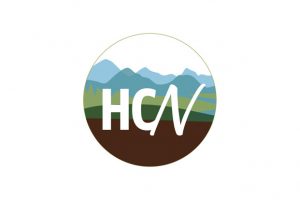SHOULDER INJURIES
Shoulder Injuries – Part One
The shoulder plays a large role in many activities and sports such as swimming, golf, hockey, baseball, tennis and volleyball. Shoulder problems are common, frequently difficult to manage and often become chronic. They are typically overuse, inflammatory type lesions, such as tendonitis and bursitis. Occasionally capsule and muscle tears may occur. High impact activities and falls may cause fractures and dislocations. This article will discuss the anatomy of the shoulder and some common injuries to this area.
The shoulder complex is made up of three bones, which are connected by muscles, ligaments and tendons: the humerus (upper arm bone), the scapula (shoulder blade), and the clavicle (collarbone). The humerus sits against the scapula and forms a ball and socket joint, called the glenohumeral joint. This type of joint allows a large range of motion in all directions. Because the “socket” of the scapula is fairly flat, there are several layers of muscles, ligaments, and connective tissue that help to hold the “ball” of the humerus in place.
There are four main muscles that help stabilize the glenohumeral joint. These muscles are collectively called the rotator cuff and are made up of the supraspinatus, infraspinatus, teres minor, and subscapularis muscles. These four muscles together provide dynamic stability of the shoulder during all ranges of motion. During powerful and rapid motions of the shoulder, these muscles provide intricate control and stability of this multi-axial joint complex. They work in conjunction with the more global, larger muscles such as the deltoid and upper trapezius. This is why many rehabilitation programs focus on the control, awareness, and strength of these smaller cuff muscles rather than general strengthening exercises initially.
Other structures at the shoulder include cartilage, capsule and bursae. Bursae are fluid filled “sacs” that help to decrease friction between two tissues. For example, the subdeltoid bursa protects the rubbing of the deltoid muscle against the humerus. Bursae can be a source of inflammation and pain if repetitive movements cause excessive friction, resulting in a bursitis.
Rotator Cuff Injuries
Rotator cuff tendonitis is an inflammation of one or several of the tendons of the rotator cuff muscles. Tendons attach the muscle belly to the bone. Over time, repetitive motions can cause micro-tears of the tendon and result in inflammation and pain. The supraspinatus muscle, which assists in abduction (lifting outwards) is the most commonly injured tendon. Overuse, muscle imbalances, age related degeneration, and repeated overhead motions can cause shoulder tendonitis. Neck involvement, such as a C5/6 disc lesion or degeneration, is always considered when evaluating shoulder pathologies.
When the tendon becomes inflamed, it thickens and swells. This can result in an impingement syndrome, where a tendon or bursa gets “pinched” between joints or other muscles during movement. Typically this involves the supraspinatus tendon, the subdeltoid bursa, or the long head of the biceps tendon. Pain is often felt in the upper arm rather than at the shoulder joint.
Further wear and tear of these tissues due to age, poor posture, poor movement patterns, and overuse can cause a rotator cuff muscle tear. Common symptoms of a muscle tear or tendonitis are pain with active movement, weakness, limited range of motion, and a catching sensation with lowering the arm.
Another common tendonitis in the shoulder involves the long head of the biceps muscle, bicipital tendonitis. This muscle sits in the front of the glenohumeral joint and extends down to the elbow. Symptoms may include pain with shoulder flexion, pain with elbow flexion, and local tenderness along the front of the shoulder.
In next month’s article we will investigate the importance of early intervention when treating shoulder injuries as well as some possible barriers to recovery and treatment options. Until then, enjoy the fresh snow and outdoor activities courtesy of our second blast of winter!
Jennifer Gordon (BSc.PT, AFCI)
Bragg Creek Physiotherapy
www.braggcreekphysio.com

























